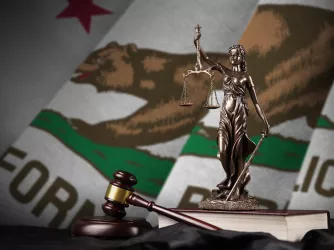Table of Contents
This Month in FIRE History: Office for Civil Rights Sends Letter of Clarification
Throughout FIRE's history, we have witnessed many significant cases and rulings. As our ten year anniversary approaches, we are delving into our archives to remind Torch readers of some of the more important or memorable moments in FIRE's fight for liberty on campuses across America.
This month, we highlight the landmark letter issued by the Office for Civil Rights (OCR) of the Department of Education that dealt a powerful blow to administrative censors.
Five years ago, on July 28, 2003, the Office for Civil Rights sent out a letter of clarification to colleges around the country in which former Assistant Secretary Gerald A. Reynolds wrote, "No OCR regulation should be interpreted to impinge upon rights protected under the First Amendment to the U.S. Constitution or to require recipients to enact or enforce codes that punish the exercise of such rights." Prior to this clarification, administrators had been citing OCR regulations to justify restricting constitutionally protected speech. The letter specifically debunked the notion that OCR's regulations required colleges and universities to restrict speech in violation of the First Amendment.
As FIRE co-founder Harvey Silverglate said, "All too often, the proponents of campus restrictions on speech bizarrely have presented civil rights for women and minorities, on the one hand, and civil liberties, on the other, as somehow at odds with one another. OCR recognizes that there is no inconsistency between civil liberties and civil rights and that civil liberties are a necessary precondition for the continued survival of civil rights."
Beyond simply making it clear that OCR regulations are not at odds with civil liberties, the letter also clarified the conditions that must be met in order to create a "hostile environment." Specifically, it stated that "the offensiveness of a particular expression, standing alone, is not a legally sufficient basis to establish a hostile environment under the statutes enforced by OCR." Instead, in order to qualify as creating a hostile environment, "[h]arassment must be sufficiently serious (i.e., severe, persistent or pervasive) as to limit or deny a student's ability to participate in or benefit from an educational program."
The 2003 letter provided crucial fuel for our amicus brief in DeJohn v. Temple University, which was decided earlier this month by the United States Court of Appeals for the Third Circuit. In the opinion, many of the points of the OCR letter were cited, such as the distinction between offensive and harassing language. In fact, the Third Circuit went beyond the OCR letter in DeJohn by upholding the stronger hostile environment standard applied by the Supreme Court in the seminal case of Davis v. Monroe County (1999): "[A] plaintiff must establish ‘sexual harassment [] that is so severe, pervasive, and objectively offensive, and that so undermines and detracts from the victims' educational experience, that [he or she is] effectively denied equal access to an institution's resources and opportunities.'"
Both the DeJohn opinion and the OCR letter highlight the fact that university speech codes are, as we have always said, unlawful. Administrators cannot reasonably justify restrictions on civil liberties by the protection of civil rights. As Reynolds wrote in the OCR letter, "There is no conflict between the civil rights laws that this Office enforces and the civil liberties guaranteed by the First Amendment."
Recent Articles
FIRE’s award-winning Newsdesk covers the free speech news you need to stay informed.

FIRE to SCOTUS: TikTok ban violates Americans' First Amendment rights

California and other states are rushing to regulate AI. This is what they’re missing

One day after FIRE lawsuit, Congress passes changes to filming permits in national parks
